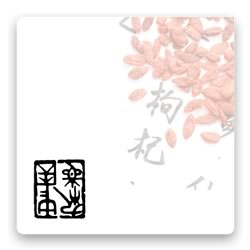We use cookies to make your experience better. To comply with the new e-Privacy directive, we need to ask for your consent to set the cookies. Learn more.
Practical Applications of Meridian Theory in Pain Management - The Meridian Wave Approach
Did you know?
For the cost of 5 articles (students) or 10 articles (practitioners) you can buy a year's access to the entire Journal of Chinese Medicine article archive.
$6.00
VAT Exempt
In stock
SKU
JCM115-5
Meridian theory serves as a fundamental concept in classical Chinese medicine. Yin yang and five phase theory,
zang fu internal organ theory and channel theory comprise a theoretical foundation often described as the
‘Three Pillars’ of Chinese Medicine. Meridian Wave Acupuncture is an effective, evidence-based system for pain management based on classical channel theory. This article outlines the basic theory and main techniques of this system for clinical application in pain management. A key element discussed involves the arrangement of the channel system into six pairs of functional physiological units. These six channels act as connecting pathways between the external environment and the internal environment of the internal organs. Each channel resonates with a distinct wave quality. By tapping into the correct channel with acupuncture treatment, a strong wave-like movement of qi can be induced in order to vigorously resolve obstruction. Three main actions are performed during the acupuncture session and include a ripple ‘Wave Initiation’ through bleeding jing-well points, a channel qi-leveraging ‘Wave Propagation’ through needling distal ends of the same channel, and immediate assessment of the result that is described as ‘Wave Effect’. Although many additional elements support this system, the key aspects presented here serve as an immediately applicable and effective tool for pain management. Much of the work and theory described in this article is based on the teachings of the late Professor Dr. Wang Ju Yi, a contemporary master of channel theory-based acupuncture. This article is dedicated to his memory.
zang fu internal organ theory and channel theory comprise a theoretical foundation often described as the
‘Three Pillars’ of Chinese Medicine. Meridian Wave Acupuncture is an effective, evidence-based system for pain management based on classical channel theory. This article outlines the basic theory and main techniques of this system for clinical application in pain management. A key element discussed involves the arrangement of the channel system into six pairs of functional physiological units. These six channels act as connecting pathways between the external environment and the internal environment of the internal organs. Each channel resonates with a distinct wave quality. By tapping into the correct channel with acupuncture treatment, a strong wave-like movement of qi can be induced in order to vigorously resolve obstruction. Three main actions are performed during the acupuncture session and include a ripple ‘Wave Initiation’ through bleeding jing-well points, a channel qi-leveraging ‘Wave Propagation’ through needling distal ends of the same channel, and immediate assessment of the result that is described as ‘Wave Effect’. Although many additional elements support this system, the key aspects presented here serve as an immediately applicable and effective tool for pain management. Much of the work and theory described in this article is based on the teachings of the late Professor Dr. Wang Ju Yi, a contemporary master of channel theory-based acupuncture. This article is dedicated to his memory.
| Author | Amos Ziv & Idan Levi |
|---|---|
| JCM Issue | JCM 115-5 |
Write Your Own Review
* Orders shipped outside of Europe are eligible for VAT relief and will not be charged VAT.

